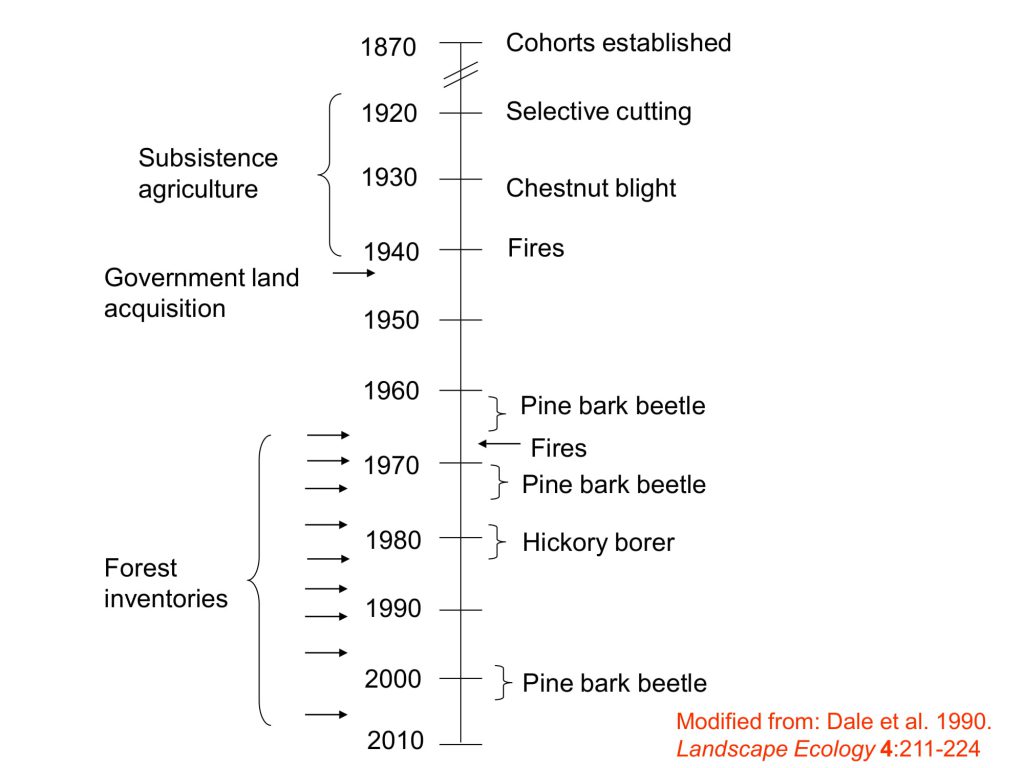
History of the Watershed
The Walker Branch Watershed Project began in 1967 under sponsorship of the U.S. Atomic Energy Commission (now the U.S. Department of Energy). Initially, the project centered primarily on the geologic and hydrologic processes that control the amounts and chemistry of water moving through the watershed.
Past projects have included:
- The International Biological Program Eastern Deciduous Forest Biome Project
- U.S. Department of Energy funded studies of watershed hydrology and forest nutrient dynamics
- National Oceanic and Atmospheric Administration funded studies of forest micrometeorology
- Studies of atmospheric deposition under the National Atmospheric Deposition Program
- Electric Power Research Institute funded studies of the effects of acidic deposition on canopy processes and soil chemistry
- National Science Foundation sponsored studies of trace element cycling, stream nutrient spiraling, and stream nitrogen cycling using 15N additions
- U.S. Department of Energy funded projects on forest responses to changing precipitation regimes
These
projects have all contributed to a more complete understanding of how forest
watersheds function and have provided insights into the solution of
energy-related problems associated with air pollution, contaminant transport,
and forest nutrient dynamics. This is one of a few sites in the world
characterized by long-term, intensive environmental studies.
